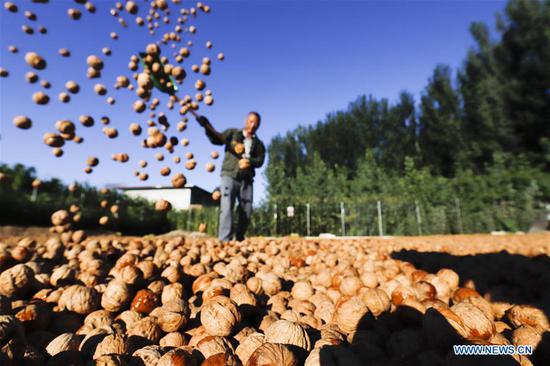China will revise its national influenza pandemic contingency plan based on its recent experience in fighting avian flu and lessons learned from the 2017 WHO guidelines on pandemic influenza risk management, public health officials said at the 2018 World Influenza Conference on Saturday.
The last major revisions - made in 2011 following the 2009 H1N1 influenza pandemic - highlighted the coordinated efforts of more than 30 institutions, according to Xu Shuqiang, director-general of the health emergency response office of the National Health Commission.
"We will make concerted efforts to improve public health, and we call on all related sectors to contribute to influenza prevention and control," he said.
"For instance, to prevent avian viruses from spreading, we should push for a new model of poultry production, such as large-scale cultivation and slaughtering, with cold-chain delivery and cold storage," Xu said.
Other measures that will be implemented to curb infections include expanding flu vaccination programs, improving public awareness about the spread and treatment of influenza and targeting populated areas during any sudden outbreak, Xu said.
China will also continue to cooperate with other countries in combating influenza, including timely reporting of data and virus sample sharing in accordance with guidelines from the World Health Organization.
"In 2013, within 72 hours after identifying the full genome sequence of H7N9, China reported the outbreak to the WHO, and shared the sequence and live virus with the WHO and other laboratories," said Wang Chen, president of the Chinese Academy of Medical Sciences.
He added that China's rapid response to the H7N9 flu allowed scientists all over the world to identify the virus's mutations and develop crucial diagnostic tests.
Human cases of H7N9 virus infection - which has a mortality rate of more than 40 percent - were first detected in 2013 in China.
In July, another four H7N9 viruses samples from China arrived in the United States, adding to the 37 already shared by China with the international community since it was first detected.
Wang said the next step to curb bird flu will focus on developing convenient diagnostic kits and effective vaccines.
In the past century, four major influenza epidemics were recorded, killing tens of millions of people around the globe. The rising world population, which has quadrupled since the beginning of the 20th century, and booming cross-border contact, will pose a higher risk to public health if an outbreak should happen again, experts said.
Since 2000, China has been developing an influenza surveillance network across the country. It now encompasses all cities and key counties, according to Mao Qun'an, head of the disease prevention and control authority.
He added that it now takes four hours to report information on epidemics and public health issues via a national sharing platform - significantly faster than the previous time window of five hours.


















































